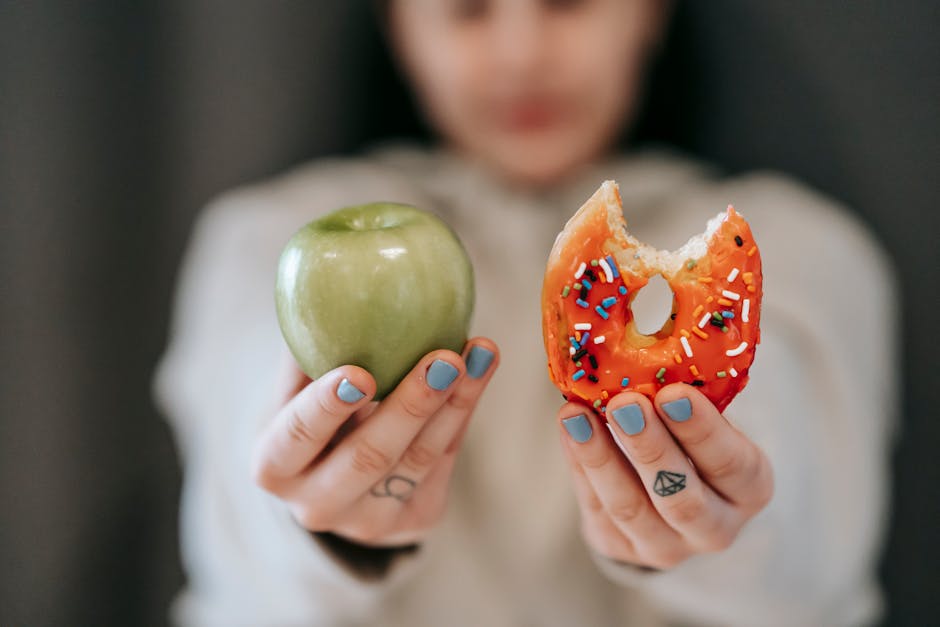Exploring Strategies to Cope with Cravings: A Comprehensive Guide
Cravings can be a powerful force that can derail even the most well-intentioned individuals from their health and wellness goals. Whether it’s that insatiable desire for a slice of cake or an overwhelming urge to indulge in a bag of chips, cravings can be challenging to resist. However, understanding the root causes of cravings and learning how to cope with them effectively can make a significant difference in maintaining a healthy lifestyle. In this article, we will delve deep into the world of cravings, exploring various strategies to cope with them and regain control over our choices.
The Science Behind Cravings

Cravings are not simply a matter of willpower; they are deeply rooted in the complex interplay of biological, psychological, and social factors. From hormonal fluctuations to neurotransmitter imbalances, there are various reasons why we may experience intense cravings for certain foods. Understanding the science behind cravings can help us develop more effective strategies to manage them.
Research has shown that cravings are often triggered by fluctuations in blood sugar levels. When blood sugar levels drop, the body signals the brain to seek out quick sources of energy, such as sugary or high-carb foods. This can lead to intense cravings for foods that provide an immediate energy boost but may not be nutritionally beneficial in the long run.
Furthermore, the brain’s reward system plays a significant role in cravings. When we consume foods that are high in sugar, fat, and salt, the brain releases dopamine, a neurotransmitter associated with pleasure and reward. Over time, this can lead to a cycle of cravings and overeating as the brain seeks out more dopamine-releasing foods to replicate the pleasurable experience.
Identifying Triggers

One of the first steps in coping with cravings is to identify the triggers that may be causing them. Triggers can vary from person to person and may include emotional stress, social situations, or environmental cues. Keeping a food diary can help you track when and why you experience cravings, allowing you to pinpoint specific triggers and develop strategies to address them.
Emotional eating is a common trigger for cravings, as many of us turn to food for comfort or to cope with negative emotions. Stress, boredom, loneliness, and anxiety can all contribute to emotional eating and trigger cravings for unhealthy foods. By becoming more aware of your emotions and developing healthier coping mechanisms, such as exercise, meditation, or talking to a friend, you can reduce the frequency and intensity of cravings.
Social situations can also be a trigger for cravings, especially when surrounded by friends or family members who are indulging in tempting foods. Peer pressure and social norms can influence our food choices, making it challenging to resist cravings in social settings. By setting boundaries, communicating your goals to others, and finding healthier alternatives, you can navigate social situations without giving in to cravings.
Healthy Alternatives

When cravings strike, having healthy alternatives on hand can help you satisfy your cravings without derailing your health goals. Stocking your kitchen with nutrient-dense foods such as fruits, vegetables, nuts, and seeds can provide you with healthy options to turn to when cravings hit.
Fruits such as berries, apples, and bananas can satisfy sweet cravings while providing essential vitamins, minerals, and fiber. Vegetables like carrots, cucumber, and bell peppers make for satisfying and crunchy snacks that can help curb cravings for salty or savory foods. Nuts and seeds are rich in healthy fats and protein, making them a great option for satisfying cravings for something crunchy or salty.
Experimenting with different flavors and textures can also help you find healthy alternatives to your favorite indulgent foods. For example, swapping out potato chips for kale chips or replacing ice cream with frozen yogurt can provide you with a healthier option that still satisfies your cravings.
Mindful Eating

Practicing mindful eating is another effective strategy for coping with cravings and developing a healthier relationship with food. Mindful eating involves paying attention to the sensory experience of eating, such as the taste, texture, and aroma of the food, without distractions.
When you eat mindfully, you are more in tune with your body’s hunger and fullness cues, allowing you to eat when you are truly hungry and stop when you are satisfied. This can help prevent overeating and reduce the likelihood of experiencing intense cravings triggered by feelings of deprivation or restriction.
Incorporating mindfulness techniques such as deep breathing, meditation, or gratitude practices before meals can help you cultivate a sense of awareness and presence while eating. This can enhance the enjoyment of your meals and reduce the likelihood of mindless eating or emotional eating that can lead to cravings.
Stress Management
Stress is a common trigger for cravings, as the body’s stress response can lead to an increase in cortisol levels, which can stimulate hunger and cravings for high-calorie foods. Finding healthy ways to manage stress can help reduce the frequency and intensity of cravings and improve your overall well-being.
Regular exercise is a powerful stress-reliever that can help reduce cortisol levels and promote the release of endorphins, the body’s natural mood-boosting chemicals. Engaging in activities such as yoga, tai chi, or walking in nature can also help calm the mind and reduce stress, making it easier to cope with cravings.
Practicing relaxation techniques such as deep breathing, progressive muscle relaxation, or meditation can help you unwind and de-stress after a long day, preventing stress-induced cravings. Finding healthy outlets for stress, such as journaling, painting, or listening to music, can also help you cope with emotions without turning to food.
Seeking Support
When coping with cravings, it’s essential to have a support system in place to help you stay on track with your health goals. Whether it’s a friend, family member, or health professional, having someone to talk to and lean on during challenging moments can make a significant difference in your ability to cope with cravings.
Joining a support group or online community focused on health and wellness can provide you with a sense of accountability and encouragement as you navigate cravings and make positive changes to your lifestyle. Sharing your experiences, challenges, and successes with others who are on a similar journey can help you feel understood and motivated to stay on course.
Working with a registered dietitian or nutritionist can also be beneficial in developing personalized strategies to cope with cravings and improve your eating habits. A professional can help you identify nutritional deficiencies, set realistic goals, and create a balanced meal plan that supports your overall health and well-being.
Practicing Self-Compassion
It’s important to approach the process of coping with cravings with self-compassion and kindness, rather than self-criticism or judgment. Acknowledging that cravings are a natural part of the human experience and that it’s okay to indulge in moderation can help you develop a healthier relationship with food and yourself.
Instead of viewing cravings as a sign of weakness or failure, see them as an opportunity to learn more about your body’s needs and preferences. By approaching cravings with curiosity and without judgment, you can gain valuable insights into your nutritional requirements and emotional triggers, allowing you to make more informed choices in the future.
Practicing self-care activities such as getting enough sleep, staying hydrated, and engaging in activities that bring you joy can also help you cope with cravings and reduce the likelihood of emotional eating. Taking care of your physical, emotional, and mental well-being can help you build resilience and develop healthier coping mechanisms.
Conclusion
To wrap things up, coping with cravings is a multifaceted process that involves understanding the root causes of cravings, identifying triggers, and developing effective strategies to manage them. By exploring the science behind cravings, practicing mindful eating, managing stress, seeking support, and practicing self-compassion, you can regain control over your choices and develop a healthier relationship with food.
Remember that coping with cravings is a journey, and it’s okay to seek help and support along the way. By implementing the strategies discussed in this article and approaching the process with curiosity and kindness, you can overcome cravings and make positive changes to your health and well-being.
Cravings may be a powerful force, but with the right tools and mindset, you can navigate them successfully and create a balanced and fulfilling life.




